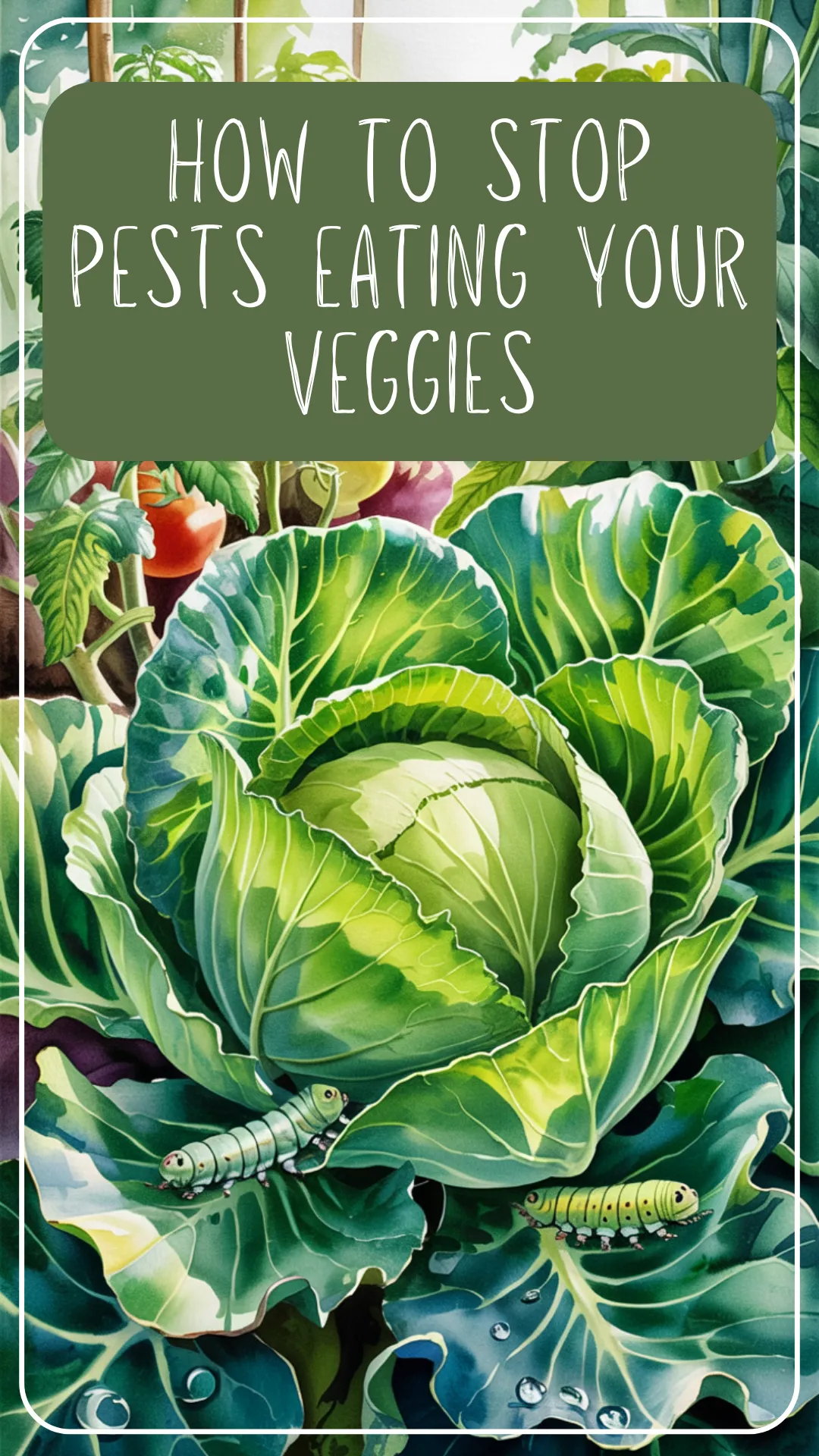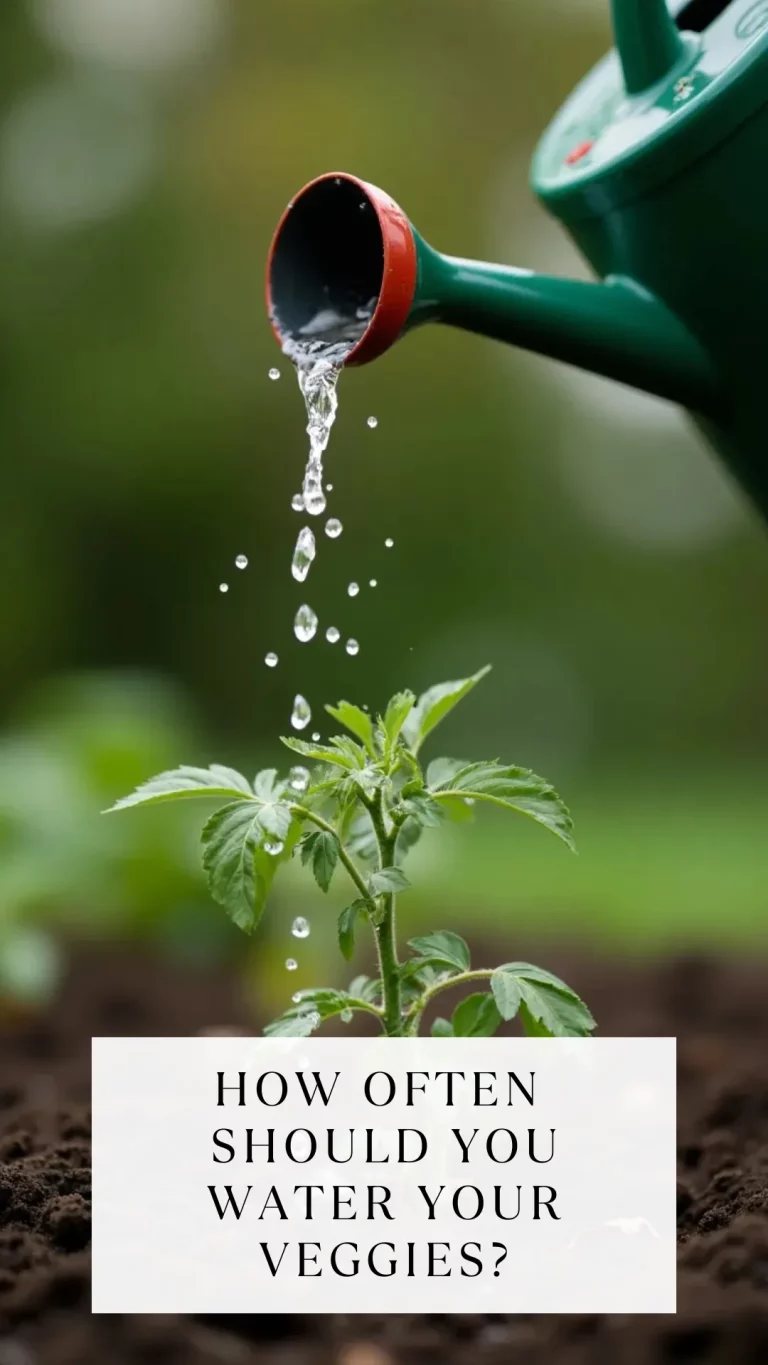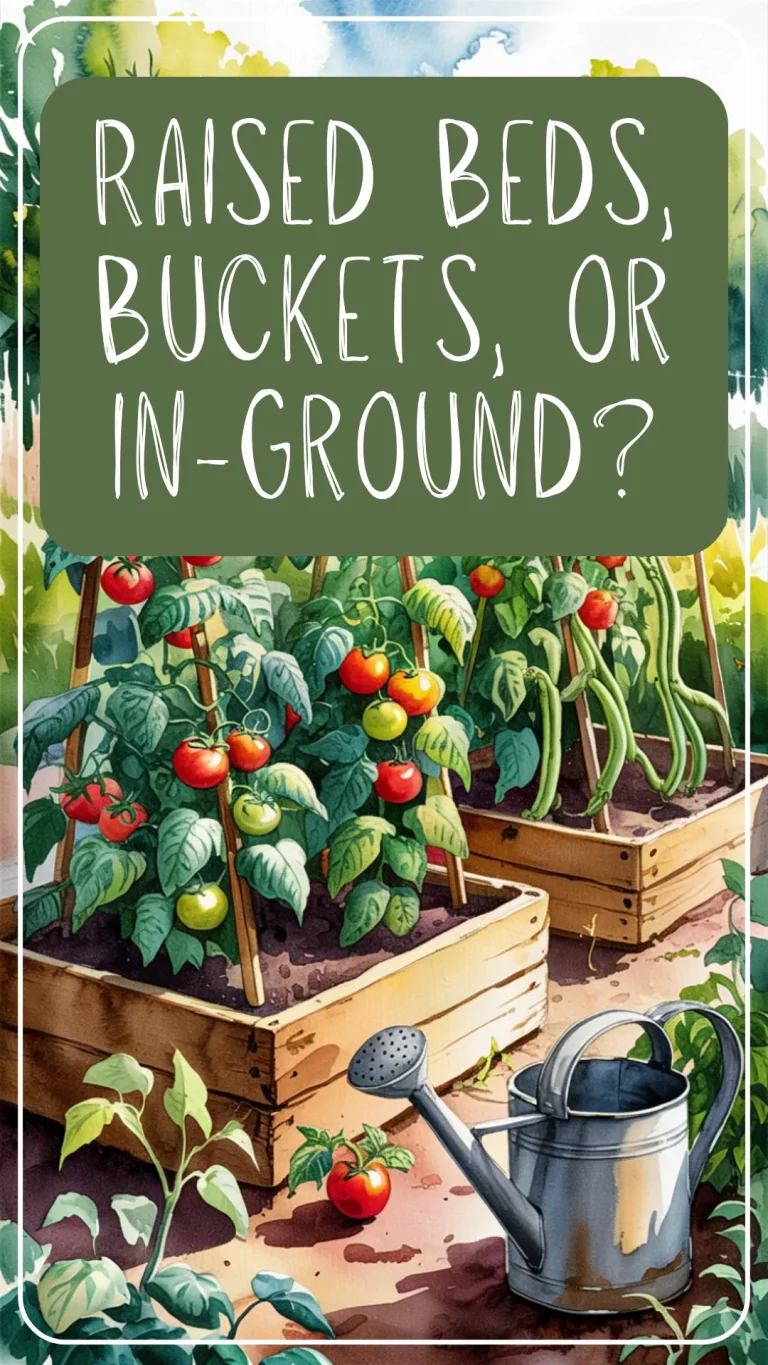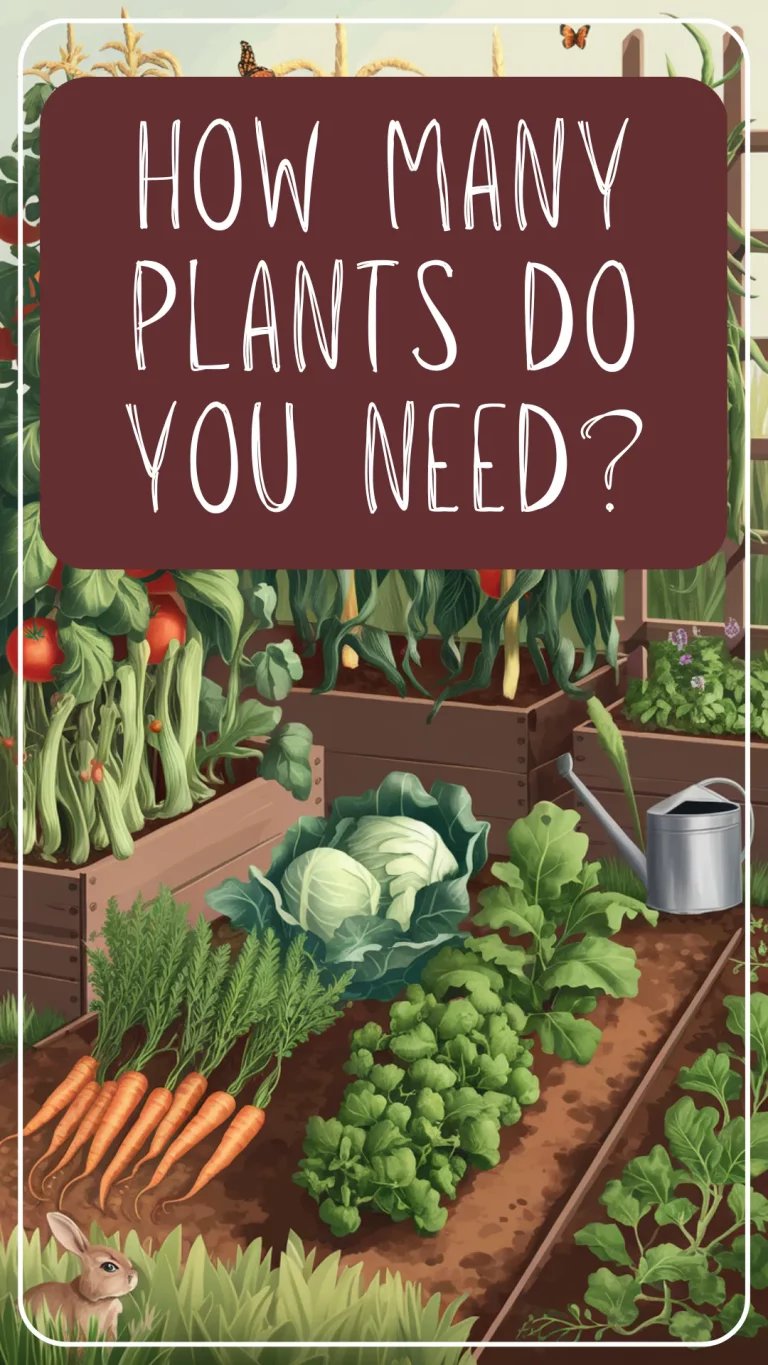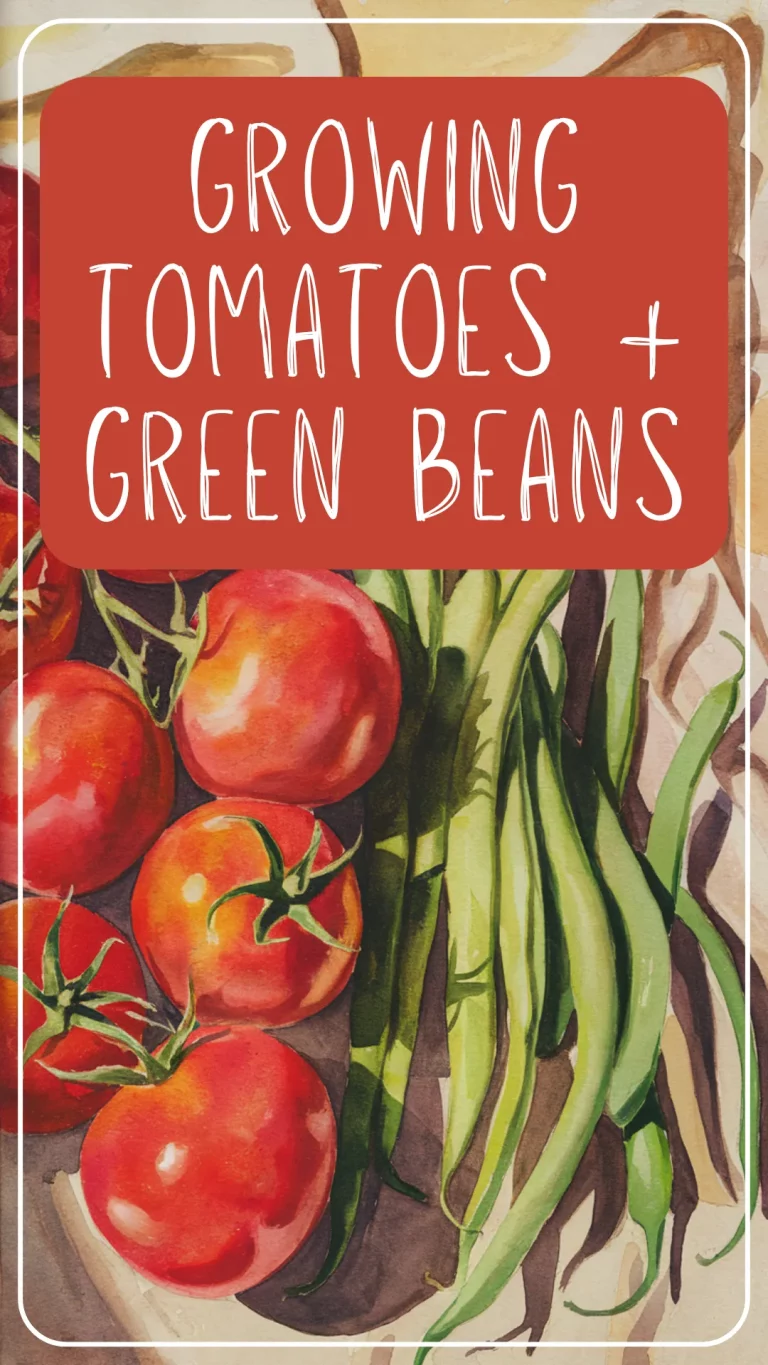How to Stop Pests Eating Your Veggies
You can keep bugs out of your vegetable garden naturally by focusing on prevention—healthy soil, crop rotation, companion planting, and insect netting go a long way. When pests do show up, you can use safe, natural solutions like neem oil, hand-picking, and even homemade sprays to stop the damage without resorting to harsh chemicals.
Need the full plan? Keep reading for what to do before the bugs arrive—and what to do when they already have a fork and napkin out.
Inside this post:
- 1 How to Keep Bugs Out of Your Vegetable Garden Naturally
How to Keep Bugs Out of Your Vegetable Garden Naturally
If you’ve ever walked out to your veggie garden, full coffee mug in hand, and found your beans munched, your kale holey, or your tomato plants crawling with something you didn’t invite—you’re not alone.
The truth is, bugs happen. Even the most lovingly tended garden will get a few unwanted visitors now and then. But here’s the good news: you can protect your vegetable garden without spraying everything in sight. And you don’t have to be an expert to do it.
Let’s talk through the natural ways to prevent pest problems in the first place—and what to do when the bugs show up hungry.
Start with Prevention (Because an Ounce Really Is Worth a Pound Here)
Let’s be honest—it’s a whole lot easier to stop bugs from taking over than it is to kick them out once they’ve moved in. A few simple habits can save you from major mid-season drama. Start here:
1. Healthy Soil = Stronger Plants
Bugs love weak plants. They go for the easy targets—seedlings that are struggling, leaves that are stressed, plants that just aren’t thriving. One of the best ways to keep pests away is to grow strong, healthy plants in the first place.
And that all starts with the soil.
Give your soil a little love and it’ll pay you back in healthy, resilient plants. Add compost regularly to keep it rich and full of life, and rotate your crops each season so pests and diseases don’t settle in for the long haul. Try not to overwater, and avoid walking on your garden beds if you can—compacted soil makes it harder for roots to thrive. When your soil is in good shape, your plants are stronger—and strong plants are much less tempting to bugs.
2. Companion Planting (AKA Natural Bodyguards)
Some plants just play better together. Companion planting is a gentle, beautiful way to confuse pests and protect your crops without lifting a finger. Certain flowers and herbs can help deter bugs, while also attracting helpful insects that do the pest control for you.
Here are a few favorites:
- Marigolds near tomatoes to help with nematodes and aphids
- Basil with peppers and tomatoes (bonus: it makes everything smell amazing)
- Nasturtiums to draw pests away from beans and squash
- Onions and garlic to keep aphids and carrot flies on their toes
You don’t need to overthink it—just tuck a few of these helpers in and around your veggie beds, and let nature lend a hand.
3. Invite the Good Bugs In
Not all bugs are bad. In fact, some are downright garden superheroes. Ladybugs, lacewings, hoverflies, and parasitic wasps (sounds spooky, but they’re tiny and helpful) feast on the bugs that feast on your plants.
So how do you get more of them?
Simple—plant a few flowers. Dill, fennel, yarrow, alyssum, and cosmos are all magnets for beneficial insects. And resist the urge to spray at the first sign of a bug—you might accidentally drive off the helpers, too. A balanced garden with a mix of bugs tends to stay healthier all season long.
4. Use Barriers and Netting
If you’ve got a known pest problem (I’m looking at you, cabbage moths), physical barriers can save your sanity.
Floating row covers, insect mesh, and even fine netting can protect your plants without using a single spray. They work especially well for:
- Cabbage, broccoli, and kale (to block cabbage worms)
- Young squash and cucumbers (to guard against squash bugs and cucumber beetles)
- Strawberries and leafy greens (to keep out birds and bunnies too)
Just make sure the covers are secure and lifted when it’s time for pollination—your bees still need a way in!
5. Keep Things Tidy
Bugs love a mess. Overgrown weeds, soggy mulch, fallen fruit—all of it makes a cozy hideout for pests. A quick tidy-up here and there goes a long way.
Here’s what helps:
- Pull weeds regularly (they attract pests and compete with your veggies)
- Clear out any damaged or diseased plants
- Harvest ripe produce quickly—don’t let anything rot on the vine
- Water early in the day so leaves dry out before evening
You don’t need to obsess over it, but a tidy canning garden is a whole lot less inviting to creepy crawlers.
Prevention Recap:
Strong soil, helpful flowers, a few floating row covers, and a quick tidy once in a while—these small, simple habits can save you a world of trouble down the line. And the best part? Most of them make your garden look and grow better anyway.
Okay But They’re Eating Everything—What Do I Do Right Now?
Sometimes you do all the right things, and the bugs show up anyway. It happens. But don’t panic—you’ve still got plenty of natural ways to fight back.
1. Hand Pick the Culprits
It’s not glamorous, but it works. Early in the morning or late in the day, take a quick stroll through the garden and look under leaves, along stems, and at the base of plants. See a cluster of beetles? Pluck ‘em. Caterpillars chewing through your kale? Into the bucket they go.
Keep a small bowl or bucket of soapy water nearby and drop the bugs in as you go—it’s quick, effective, and oddly satisfying. It’s especially helpful for:
- Squash bugs
- Japanese beetles
- Tomato hornworms (those big green guys)
Bonus: your kids might think it’s gross fun and want to help.
2. Homemade and Natural Sprays
If hand-picking isn’t cutting it, natural sprays can help slow down the munching without harming your plants—or the good bugs.
Here are a few gentle options:
- Neem oil: A natural pesticide that messes with insect life cycles. Mix with water and a tiny bit of dish soap, then spray the leaves (especially undersides).
- Garlic or chili sprays: Make a mild deterrent at home using garlic, cayenne, water, and a few drops of soap. It won’t kill pests, but it will make your plants less tasty.
Always spray in the early morning or late evening so you don’t burn your plants or bother your pollinators.
3. Try Diatomaceous Earth
If you’ve never used it, diatomaceous earth is a fine, powdery substance made from fossilized algae—and it’s a surprisingly powerful natural pest control tool.
Here’s how it works: when crawling insects (like slugs, ants, or beetle larvae) come into contact with it, the powder dries them out. It’s not harmful to humans or pets, but it’s a nightmare for soft-bodied bugs.
How to use it:
- Lightly dust the base of your plants (not the flowers—leave those for the bees)
- Reapply after it rains or if things get too dewy
- Use a mask when applying—it’s fine for your skin but not great to breathe in
This stuff works great for slug patrol and anything sneaky crawling in from the soil.
4. Use Trap Crops to Distract the Pests
Sometimes the easiest way to save your vegetable garden is to give the bugs something else to eat. That’s where trap crops come in.
A trap crop is a plant that pests like even more than your main vegetables. You plant it nearby—almost like a decoy—and let the bugs hang out there instead.
Some popular trap crop tricks:
- Nasturtiums planted near beans or squash (aphids love them)
- Mustard greens to lure flea beetles away from your kale
- Sunflowers to attract stink bugs and leaf-footed bugs
Once the pests are gathered, you can pick them off, prune the trap crop back, or even just remove the whole plant. It’s kind of like setting a bug buffet… but away from your prize tomatoes.
Long-Term Strategies That Pay Off Season After Season
You’ve dealt with the current invasion—go you! Now let’s set your future garden up for fewer pests and fewer headaches.
1. Rotate Your Crops
Bugs (and soil diseases) love it when you plant the same thing in the same spot year after year. Breaking up that cycle helps keep their populations down—and your plants healthier.
Each season, shift your crops around by family:
- Don’t plant tomatoes where you had peppers last year
- Move beans and peas to a new bed
- Give cucurbits (squash, cucumbers, melons) a fresh start elsewhere
It’s a small habit with a big payoff.
2. Mulch Smart
Mulch can be your best friend—locking in moisture, feeding the soil, and keeping weeds down. But it can also accidentally shelter pests if you’re not careful.
Here’s what works:
- Use straw, shredded leaves, or compost as mulch
- Keep it pulled back a few inches from plant stems to avoid rot and bug hiding spots
- Refresh as needed to keep things tidy and functional
A well-mulched bed supports plant health—and that alone helps deter the snackers.
3. Know Your Enemy (and Keep Notes)
The best defense? Recognizing trouble early. Learn to ID common pests in your area—especially their eggs and larval stages—so you can catch problems before they spread.
And if you keep a little veggie garden journal? Even better. Jot down what hit and when (and what worked), so you’re ready next season. Over time, you’ll start to see patterns—and you’ll be two steps ahead of those bugs before they even show up.
You Don’t Have to Win Every Battle
Some chewed leaves, a few holes in your kale—it’s all part of the deal when you grow food naturally. But the more you understand your garden (and the bugs that come with it), the easier it gets to keep things in balance.
Start with healthy soil. Add in a few smart habits. And when the pests show up? You’ll be ready—not panicking with a flashlight and a spray bottle at midnight. You’ve got this.
Read Next
Want to build a canning garden that’s less buggy and more bountiful next season? These posts will help:
- Planning Your Canning Garden – A big-picture guide to help you grow what your pantry actually needs (and skip the stress).
- What Planting Zone Am I In? – Knowing your frost dates and growing window can help you time things right and avoid pest-prone planting.
- Garden Gluts: What to Do When Everything Ripens at Once – Because sometimes the real bug problem is you blinked and suddenly have 30 pounds of tomatoes.
- How Many Plants Do I Need for Canning? – Stop the guesswork and grow just enough for the preserves you love.
